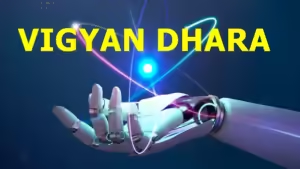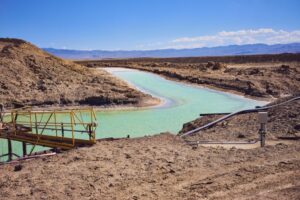DATE : Aug 26,2024
Welcome to your daily dose of news. Today, we’ll delve into the latest global developments, from political events to scientific breakthroughs. Stay informed and engaged as we explore the most significant stories of the day.

Context
● The recent rape and murder of a junior doctor in Kolkata has led many to draw parallels with Aruna Shanbaug incident of 1973.
● Aruna Shanbaug was a nurse who was brutally attacked in 1973 by a hospital co-worker.
● For over four decades, she remained confined to a single room in KEM Hospital(where the incident happened) in Mumbai, where she was cared for by the hospital staff with great dedication.
● She passed away in 2015 due to pneumonia after being in a vegetative state for 42 years.
● The attack had left her in a permanent vegetative state.
● Her case also led to national debate on euthanasia.
Vegetative state
● A vegetative state is a condition where a person with brain damage appears to be awake but doesn’t respond to their surroundings or perform purposeful actions.
What is the Euthanasia?
● Assisted dying or euthanasia is the painless killing of a patient suffering from an incurable and painful disease.
Euthanasia laws in India
● In 2011 the Supreme Court allowed Passive Euthanasia in Aruna Shanbaug case.
Some conditions were laid down by the SC for access to Passive Euthanasia-
● For accessing euthanasia the patients or the family must prove that the patient is undergoing “ intolerable” suffering.
● A High Court must allow Passive Euthanasia case by case basis.
Euthanasia- Passive and Active
● Passive euthanasia means withdrawing life support to induce death in a natural way.
● Active euthanasia means injecting lethal drugs to induce death. This is not permitted in India.
Euthanasia-analysis
Arguments for Euthanasia/Assisted Suicide(especially active euthanasia)
1. Dignity
● Article 21 includes right to life with dignity.
● This automatically entails right to die with dignity.
2. Freedom of Choice:
● Advocates argue that the person should be able to make their own choice.
3. Humane:
● It is more humane to allow a person with intractable suffering to be allowed to choose to end that suffering.
4. Limit the grief of loved ones
● It can help to shorten the grief and suffering of loved ones.
5. Quality of Life:
● Only the individual really knows how they feel, and how the physical and emotional pain of illness and prolonged death impacts their quality of life.
Arguments against Euthanasia/Assisted Suicide
1. Possibility of revival
● Some medical experts argue that there is always a possibility of revival even in seemingly incurable cases.
2. Possibility of misuse
● The chances of misuse is a major cause of concern.
● There are many illegal activities going on like organ smuggling that may promote active euthanasia for vested interest.
3. Moral and Religious Arguments
● Several faiths see euthanasia as a form of murder and morally unacceptable.
4. Patient mental competence
● Euthanasia is only voluntary if the patient is mentally competent.
● Mental competence is a subjective idea.

Background
● National Pension Scheme, kicked in for central government employees joining government service on or after January 1, 2004.
● It replaced the old pension scheme which was officially known as “pay as you go” scheme.
Old pension scheme(also known as Pay as You Go scheme)
● Pension= 50% of last withdrawn salary
● If salary is Rs 1 Lakh at the time of retirement, pension will be Rs 50,000
● Annual hike of 3% every year.
National Pension Scheme
For Central government employees
● Started in 2004
● Employees to make 10% of basic pay contribution to pension fund.
● The government will make 14% contribution.
● NPS allows members to withdraw just 60% of their accumulated savings at the time of retirement.
● With the remaining 40%, it is mandatory to buy an annuity product.
For others
● 2009 onwards- NPS opened for all citizens.
● Not compulsory- One can take private Pension schemes also.
● Government makes no contribution in the Pension account of non govt employees.
● Almost all State Govts also shifted to NPS.
NPS vs OPS
Benefits of OPS
1. Guaranteed amount
● Under the OPS, pension was computed at 50 percent of the last salary withdrawn.
2. Payout by the government
● an employee was entitled to and the government paid the whole amount.
Issues of OPS
1. High Fiscal burden for the govt
● Unsustainable nature of a growing pension bill, with around 4 percent of the Union Budget already going solely towards pensionary
benefits.
● Economists believe that the new system makes for greater fiscal sense since it relieves the government of substantial financial pressure.
2. More options of investment for an employee
But the protest against the National Pension System (NPS) and in favor of the Old Pension Scheme (OPS) has been a significant issue among government employees in India
Current news?
● The Union Cabinet approved a new Unified Pension Scheme (UPS).
● The scheme replaces the National Pension System (NPS) for government employees.
Importance of Lithium
● A lithium-ion battery or Li-ion battery is a type of rechargeable battery.
● Thus it is used in laptop mobile ,phones and electric vehicles.
● South American countries (Chile, Argentina and Bolivia) are rich in Lithium.
● The article talks about environmental issues associated with Brine Evaporation Process, a method used in extraction of Lithium.
Areas where Brine Evaporation Process applied?
● Typically employed in regions with large, high-altitude salt flats, known as salars.
● Such salars are found in Chile named Salar de Atacama, Bolivia named Salar de Uyuni etc.
Brine Evaporation Process
Process involved
● Lithium-rich brine is pumped out from underground aquifers beneath the salars.
● This brine is a salty solution that contains various minerals, including lithium.
● The extracted brine is channeled into large, shallow evaporation ponds.
● These ponds are designed to maximize the surface area exposed to the sun, facilitating natural evaporation.
● Over time, the water in the brine evaporates, brine becomes more concentrated.
● Once the lithium concentration reaches the desired level, a chemical reagent (such as sodium carbonate) is added to precipitate lithium
carbonate, mineral form in which Lithium is found normally.
● Lithium carbonate is further purified.
Advantages:
1. Cost-Effective
● The brine evaporation method is generally more cost-effective than hard rock mining, as it relies heavily on natural solar evaporation.
2. Large-scale Production
● It allows for large-scale lithium production, which is crucial to meet the growing demand for lithium-ion batteries.
Challenges:
1. Time-Consuming
● The evaporation process can take several months, making it a relatively slow method of production.
2. Environmental Impact
● The process can lead to significant environmental impacts, such as water depletion in arid regions and the alteration of local ecosystems(as brine water can do damage to ecosystem).
3. Subsidence of salt flat land
● Recently witnessed in Chile.
Current news?
● A new study revealed , Chile’s Atacama salt flat is sinking at a rate of 1 to 2 centimeters per year due to lithium brine extraction.

Red Sanders
● Primarily found in the southern Eastern Ghats mountain range in Andhra Pradesh, India.
● Most prominent location-Seshachalam Hills.
● Known for its rich, deep red wood, which is highly valuable.
● Dense and durable, making it highly sought after for its color and quality.
Uses
1. Traditional Uses
● The wood has been traditionally used for making furniture, musical instruments, and carvings due to its attractive color and grain.
2. Medicinal Uses
● It has also been used in traditional medicine for its purported therapeutic properties.
3. Dye and Cosmetics
● The red pigment extracted from the wood is used in dyeing fabrics and in the cosmetics industry.
Seshachalam Hills are a part of the Eastern Ghats in Andhra Pradesh
Concerns-
● Illegal red sanders smuggling due to its high demand in international markets, particularly in China and Japan.
● This has led to massive decline in availability of Red sanders.
Conservation Status:
1. CITES: listed under Appendix II
2. IUCN Status: “Endangered”
Reasons for rise in smuggling of Red Sanders
1. Organized Nexus
● A well-organized mafia that smuggles red sanders, involving local criminals, police, and even politicians.
2. Socio-Economic Factors:
● Poverty and lack of employment opportunities in the region drive local villagers to participate in the illegal trade.
3. Inability of Government and Enforcement Agencies
● Officials are often outmatched by the well-funded and organized smuggling networks.
4. The Pushpa factor
● The dialogue—Jhukega nahi (Will not bend)—caught the attention of the youth all over India.
● Officials believe, the movie has glorified red sanders smuggling.

Current news?
● The Union Cabinet approved two key scientific initiatives to enhance research and technology solutions.
1. Vigyan Dhara Initiative
● Merges several existing science promotion programs run by the Department of Science and Technology (DST).
● ARNF (Anusandhan National Research Fund) will manage these resources efficiently.
2. Biotech Sector Focus initiative
● The initiative will focus on scaling up the number of biotech startups from 6,000 in 2023 to over 10,000 by 2025.
● The biotechnology sector is projected to grow significantly, reaching $150 billion by 2025 and $300 billion by 2030.
Bottom-line
Stay tuned for tomorrow’s in-depth analysis on the latest global and national developments. We’ll break down the key stories, provide expert insights, and offer a comprehensive understanding of the issues shaping our world. Follow us for daily updates and stay informed.


